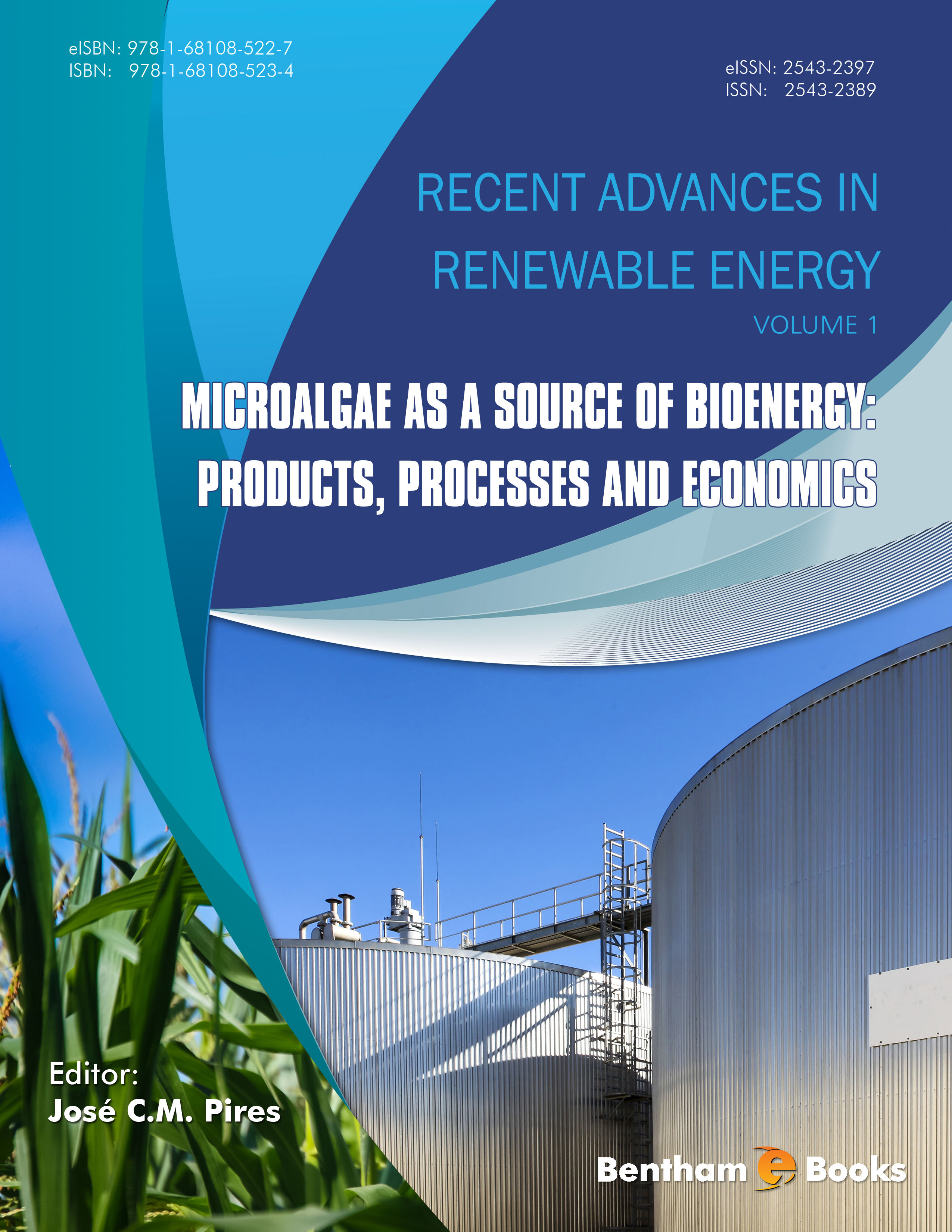The book “Microalgae as a Source of Bioenergy: Products, Processes and Economics” presents recent advances in biofuel production with microalgae. It is composed of 17 well written chapters by leading researchers in this field.
European Union (EU) defined targets for each Member State regarding climate and energy. Microalgae are considered a promising and sustainable source of energy, due to their biomass productivity and ability to capture CO2. Several research studies were performed and new procedures to reduce the biomass production cost were developed. In this context, the proposed book have the contributions of relevant researchers in microalgal research area, focusing on the energy product yields, process developments and economics.
Biodiesel is one of the most studied biofuels, which can be produced by several raw materials. Microalgal biodiesel is the third generation biofuel and it is considered the most sustainable route for the production of this renewable form of energy. Microalgae present high areal productivities and their production does not compete with food market. Besides the biodiesel production with extracted oil, the residual biomass can be used for other energetic applications, reducing the cost of each type of produced energy. Chapter 1 presents the integration of biodiesel production and cogeneration and concludes that microalgae is an economic viable energy solution, if the biorefinery concept is applied, taking part from several products that microalgae can offer. Chapter 2 presents the potential of microalgae for bioethanol production, focusing on cultivation strategies to enhance carbohydrate productivity (which is easier to break down to simple reducing sugar), biomass pre-treatment methods, and hydrolysis and fermentation process. Chapter 3 presents different routes to produce bioethanol and presents a review of the research works about bioethanol production from algae. Chapter 4 introduces the basic principles of anaerobic digestion (biogas production), particularly when using microalgae as substrate. The influence of the most important operating parameters is also described. Biohydrogen is the last focused biofuel product. Chapter 5 shows the recent progresses regarding microalgal cellular mechanisms and production processes. As biofuel should present a lower price, several strategies should be implemented to reduce the production costs. Chapter 6 shows the main characteristics of the most used configurations of photobioreactors. Chapter 7 presents CO2 biofixation from industrial flue gases by microalgae, describing the microalgal metabolism. The use of CO2 from this source has dual benefit: (i) reduction of biomass production cost; and (ii) mitigation of industrial emissions of CO2, which is one of the most important greenhouse gas. Harvesting, thickening and dewatering processes represent a significant cost in the production of microalgal biomass. Chapter 8 gives an overview of the related technologies, presenting their advantages. Chapter 9 summarizes recent developments in microalgal oil extraction processes, including drying methods, cell disruption methods, conventional or supercritical solvent extraction methods, and recent approaches for direct biodiesel production.
Concerning the current production and economics of microalgal production, Chapter 10 places international energy policy in the context of the current and projected energy landscape. It gives an overview of the global and commercially installed infrastructure. Some important research projects are also presented. Chapter 11 presents a current view of the commercial production of microalgae cultivation at a large scale worldwide. It also presents the main variables that influence microalgal cultures and compares different types of photobioreactors. Chapter 12 describes the environmental applications of microalgae: CO2 capture and nutrient recycling. Mechanisms of assimilation of nitrogen and phosphorus are discussed in this chapter. Configurations of photobioreactors are compared in terms of wastewater treatment enhancement (and downstream processes) and improving mass transfer of CO2 from the gaseous stream to the culture. Chapter 13 presents a wide range of products obtained from microalgal biomass (biorefinery context) that can enhance the economic viability of biofuel production. Chapter 14 performs a techno-economic assessment of microalgal oil production. Process modelling was performed through simulation software Aspen Plus. Chapter 15 reviews biofuel production from different feedstocks, focusing on the techno-economic challenges. Sensitivity analysis was performed to examine the economic parameters are the sales price was highly dependent on algae doubling time. Chapter 16 presents a life cycle assessment of the greenhouse gases of microalgal biofuels. Chapter 17 shows the results of the triple bottom line (for sustainability evaluation) assessment of algal bio-crude production. The considered stages in the analysis are the cultivation of algae, extraction of bio-crude and transport of bio-crude to a refinery. A region of Australia was selected for algae production. The results show that algae bio-crude production is more sustainable than crude oil production.
I would like to thank all the authors for their efforts in writing such excellent chapters. I also acknowledge the entire team of Bentham Science Publishers, particularly Ms. Fariya Zulfiqar (Assistant Manager Publications) due to the important orientations at different stages in the publication of the book. I am confident that this book will attract the attention of researchers and professionals of microalgal biofuel production.
José Carlos Magalhães Pires
Faculty of Engineering
University of Porto
Porto
Portugal

